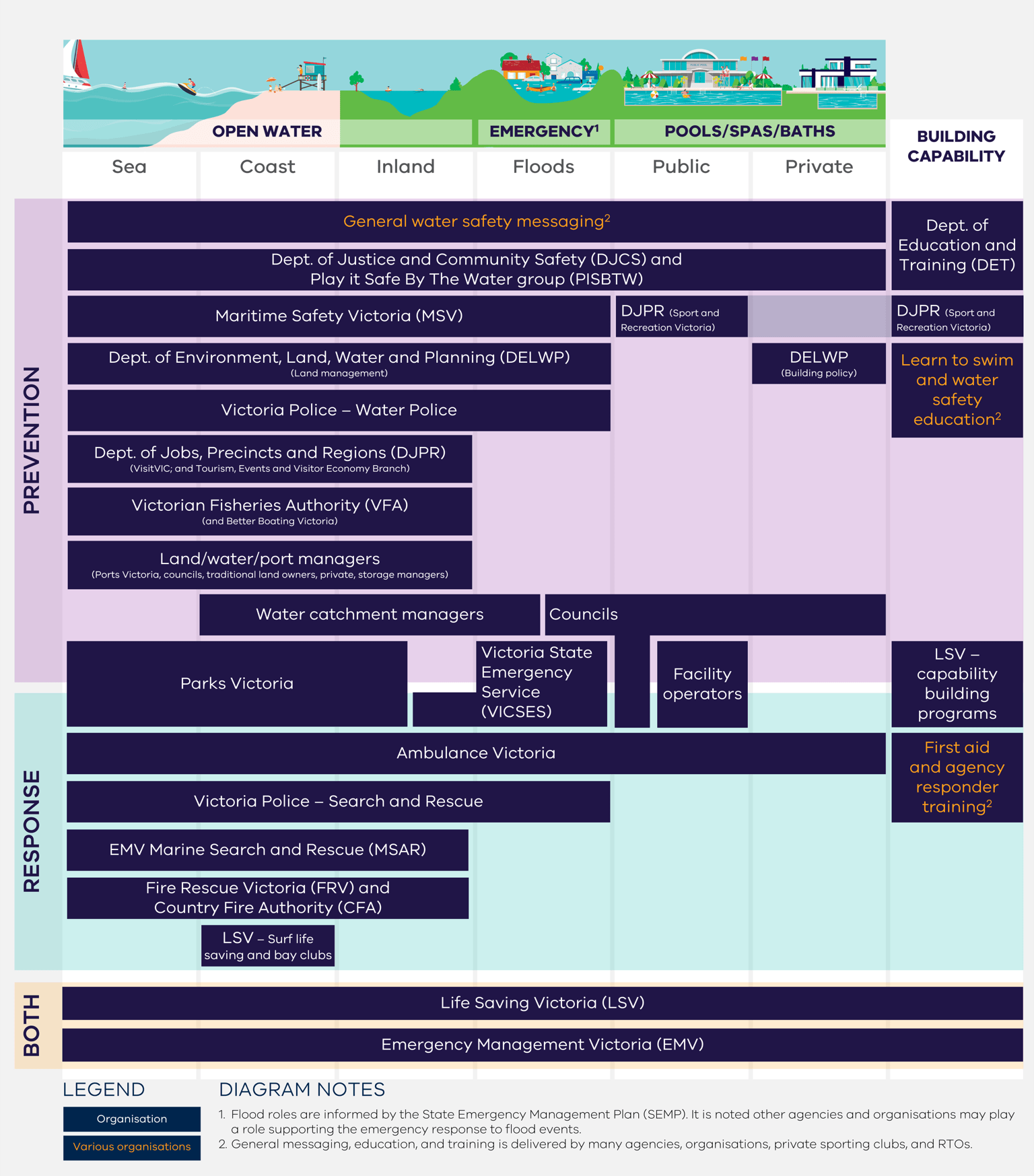Reducing water related fatalities and serious injuries is challenging, as evidenced by the plateau, and more recent spike, in drowning statistics. This is because we are dealing with inherently risky behaviours of a broad range of cohorts across various settings. Getting traction here requires important contributions from a number of players.
With a number of recent trends increasing exposure to water safety risks (as outlined above), it is critical that we work more effectively together to reduce harm. This is the focus of this strategy – a strong focus on coordination and collaboration from water safety agencies, communities, local government, government departments and agencies, and other parties to reduce drownings and water‑related injuries to zero.
The three levels of collaboration and coordination required are outlined in Figure 9 below and in the following subsections.
Promote shared responsibility in communities
Water safety is a shared responsibility for all Victorians, and services and support provided by the sector aim to be inclusive of all Victorian communities.
All communities are different. The nature and scale of risk exposure and depth of experience around water are unique to each, and as a result, support requirements vary. For example, CALD communities are statistically more susceptible to water risks.
Where possible, initiatives to improve water safety are most effectively led at a community level. Through better collaboration and coordination, the sector can better tailor services and empower communities (and individuals) to play a larger role in water safety.
Work with local partners to manage local risk
Local governments, local land and waterway managers, and other local partners have unique insight into water safety risks at the community level, founded in the local context. Statewide agencies currently do not have access to the data required to provide this level of insight.
There is an opportunity to support local partners to conduct strategic local risk assessments and develop water safety plans tailored to their local area. Support should be tailored to cater for the diversity in capacity and capability across the many different local bodies across Victoria. This work can build on foundations established through the recently reformed Region and Municipal Emergency Management Planning processes, to improve how agencies partner with government and other partners to deliver water safety initiatives within the local context.
Improve coordination and collaboration between agencies
The water safety landscape is complex – many agencies operate in this space, with insufficient clarity about roles and responsibilities. Figure 10 provides an overview of the roles agencies and other stakeholders play in the landscape, across various water safety settings.
This complexity has led to inefficient, siloed approaches with suboptimal sharing of resources and intelligence across the sector (e.g. limited data and insight sharing, duplicative and unaligned messaging), as well as limited strategic oversight and prioritisation of water safety initiatives.
The sector has taken steps to collaborate and coordinate better. The establishment of the Water Safety Taskforce has provided early benefits to the sector, which can be extended through concerted collaboration and coordination efforts.
Updated
